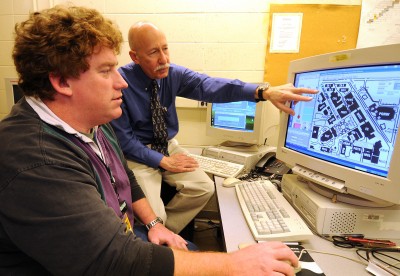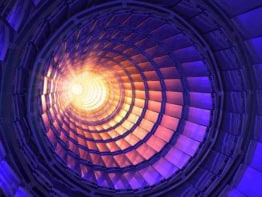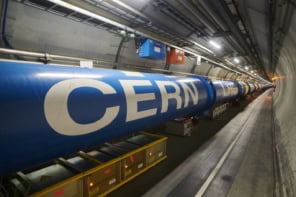
It’s any government’s nightmare: a terrorist drives into a busy part of a city, drops off a package containing a few kilos of dynamite imbedded with a radioactive isotope, and detonates it. The explosion from such a “dirty bomb” could not only kill many bystanders, but it would shower the surroundings with radiation — spreading panic throughout the country and possibly leaving the blast area inhospitable.
But according to researchers at Purdue University in the US, the public could be equipped to prevent dirty bombs or even nuclear bombs from ever entering a city. They propose fitting mobile phones with small radiation detectors that are sensitive enough to pick up low levels of gamma rays emitted by radioactive devices. The exact levels could be signalled to a central computer, which would then use the position of the phones to build up a map of radiation in a city.
Andrew Longman, a physicist who specializes in instrumentation and who is working under contract for Purdue, says the system could pinpoint the location of any dangerous radioactive device. “If every cell phone user in the country were participating, it would be very hard to move any kind of serious nuclear device into a city. Right now, it is effortlessly easy.”
If every cell phone user were participating, it would be very hard to move any serious nuclear device into a city Andrew Longman, contracting instrumentation scientist
Safety in numbers
A small number of detectors positioned throughout a city would stand little chance of detecting a radioactive device, unless one came in very close proximity. To be effective, the Purdue system would make use of a large number of detectors in the busiest areas. Although there would be a relatively large background noise of gamma rays from other sources, Longman says that his team has adapted a technique from gamma-ray astronomy to make the signal from a radioactive device more visible.
Longman told physicsworld.com that he was reluctant to divulge how this technique works in detail for fear that people might figure out a way to “defeat it”. Normally in gamma-ray astronomy the signal is improved either by limiting the detector to a certain energy band or by orienting it to exclude noisy sources. However, Tony Dean, an astrophysicist at the University of Southampton in the UK, suggests that focusing on one energy band would not work because dirty bombs could contain isotopes emitting gamma rays at many different energies. Moreover, mobile phones are always moving so could never be oriented in a set direction. This would imply that Purdue’s system relies on statistics to find a more radioactive, localized source in the map that is characteristic of a bomb.
Dean also thinks that silicon would be the most likely choice for the detector. Other materials, such as cadmium-zinc-telluride are unlikely to operate at the low voltages found in mobile phones, while germanium needs cryogenic cooling. “A silicon detector could be made quite small — say 5 mm2 — with all the circuitry ready on the back,” he adds.
Successful test
The team, which along with Longman includes Ephraim Fischbach and Jere Jenkins from Purdue, has already tested the system on the Purdue campus. The researchers found that it could spot a test radiation source much weaker than a dirty bomb that was being carried around by one them. They are now trying to commercialize the design.
Even if they are successful, however, it will be difficult to persuade mobile phone companies to integrate detectors within their products because it will add to both weight and cost. “They need encouragement to be good corporate citizens,” says Longman, who also thinks that “government moribundness” will be an issue. “[The US] spent less than $100m last year to solve the number one existential threat to the country. They need public pressure and interest to focus on things that could actually prevent nuclear terrorism at the level we did the Manhattan [atomic bomb] project in World War II.”



